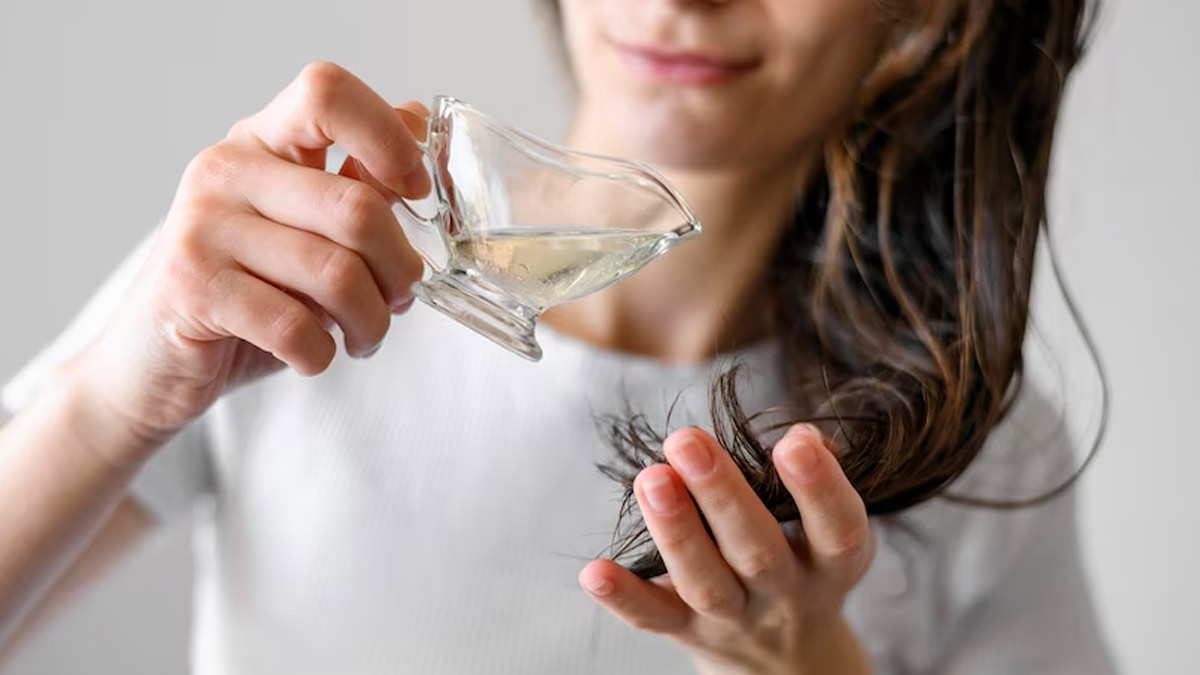
Who doesn't want silky, smooth hair that looks like it just stepped out of a professional hair spa? The good news is, you don't have to break the bank or spend hours at a salon to achieve those enviable tresses. With a simple and effective hot oil treatment, you can indulge in a luxurious hair spa experience right in the comfort of your own home.
Dr Nivedita Dadu, Dermatologist, Founder and Chairman of Dadu Medical Centre, New Delhi, suggested oiling your hair once or twice a week, based on your hair type and specific needs.
According to the International Journal of Trichology, scalp care determines the health and condition of the hair and prevents diseases.
Benefits of Hot Oil Treatment

Hot oil treatments have been used for decades as a natural remedy for dry and damaged hair. The heat from the oil helps open up the hair cuticles, allowing the nourishing properties of the oil to penetrate deeply into the strands. This treatment helps moisturise the hair, restore its natural shine, and reduce frizz. Also, hot oil treatments can stimulate blood circulation in the scalp, promoting hair growth and preventing hair loss.
Choosing the Right Oil
The key to a successful hot oil treatment is choosing the right oil for your hair type and concerns. Some popular options include coconut oil, olive oil, almond oil, argan oil, and jojoba oil. Coconut oil is excellent for deep conditioning, olive oil provides intense hydration, almond oil strengthens the hair, argan oil adds shine, and jojoba oil helps balance the scalp's natural oil production. You can even mix different oils to create a customized blend that suits your specific needs.
Also Read: Tired Of Oily Hair? Here're Home Remedies To Get Rid Of It
Step-by-Step Guide to a Hot Oil Treatment

Step 1: Start by gently heating the oil of your choice
You can do this by placing the oil in a heatproof container and immersing it in warm water for a few minutes or using a microwave for a short duration. Make sure the oil is warm and comfortable to touch, not hot.
Step 2: Part your hair into sections for easier application
Apply the warm oil to your scalp using your fingertips and gently massage it in circular motions. This will stimulate blood circulation and help distribute the oil evenly.
Step 3: Massage your hair
Once you've covered your scalp, work the remaining oil through the lengths of your hair, paying extra attention to the ends, which tend to be drier and more prone to damage. To achieve even distribution, comb through your hair with a wide-toothed comb.

Step 4: Cover your hair
After applying the oil, cover your hair with a shower cap or wrap it in a warm towel. This creates a warm and humid environment, allowing the oil to penetrate deeply into the hair shafts. For an intensive treatment, leave the oil on for at least 30 minutes. Dr Dadu said Keeping your hair in a loose braid or bun while you sleep will lessen oil transfer and keep it manageable.
Also Read: Tired Of Frizzy, Dull, And Rough Hair? Here're 5 Oils To The Rescue
Step 5: Rinse your Hair
Use cool or lukewarm water instead of hot since hot water can rob your hair of its natural oils. Also, use a gentle shampoo to remove excess oil, followed by a conditioner to seal the moisture.
Step 6: Let your hair dry naturally
Pat your hair dry with a soft towel and let it air dry naturally. Avoid using heat-styling tools immediately after the treatment to prevent further damage.
Frequency of Hot Oil Treatment
The frequency of hot oil treatments depends on your hair's condition and needs. For regular maintenance, aim for a treatment once a week or every two weeks. If your hair is severely damaged or extremely dry, you can increase the frequency to twice a week until you notice improvement. Once your hair begins to regain its health, you can reduce the frequency to once a month or as needed.
Disclaimer
The information in this article is for informational purposes only and it is advisable to consult with your expert before trying any hair care routine.







